
Shalimar Garden Srinagar
Table of Contents
ToggleOverview
It stands majestically in the very striking city of Srinagar, Kashmir. Constructed by Emperor Jahangir on the instance of his love, Nur Jahan in the initial decades of the 17th century, Shalimar Garden is one of the magnificent examples of Mughal horticulture as well as brilliant architectural work. As such the historical importance is along with a very delicate beauty and due to that, people all over this world have got themselves spellbound over this Shalimar Garden still.
When one plans to visit Srinagar, then Shalimar Garden is a place where it shall not be missed. In the process of developing into the large article, we shall dwell more upon the history, great architectural grandeur, as well as beauty of this renowned Mughal garden that flows wonderfully across the seasons. Some practical tips, along with some nearby attractions and all these happenings during your visit would complete all we think for you. This blog shall try to give the overall impression of Shalimar Garden and why it still remains one of the most visited destinations in Kashmir.

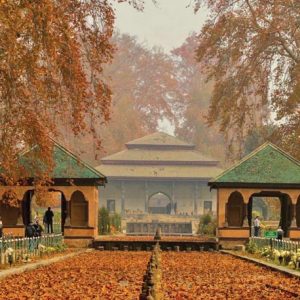
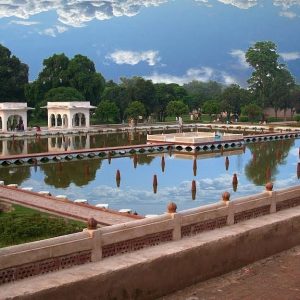

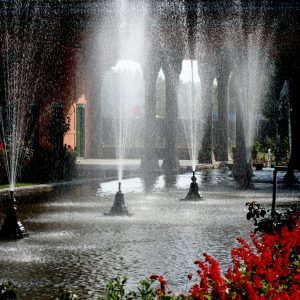
History of Shalimar Garden
Mughal Connection
It was commissioned by the great Mughal Emperor Jahangir in 1619 for his beloved wife, Empress Nur Jahan. This garden was located on the northern banks of Dal Lake and reflected the glory of Mughal Empire with their craze for beautiful gardens. Among the reasons behind their exact construction is that the Mughal emperors loved nature, and they built these gardens as an escape from all the harassments of their royal lives, providing an absolutely serene retreat filled with art, beauty, and comfort.
Shalimar Garden was highly inspired by the designs of Persian gardens, which the Mughal emperors were very fond of. The garden itself is a beautiful combination of Persian aesthetics, Mughal architecture, and Kashmiri craftsmanship. At that time, the garden was not only a symbol of the emperor’s power but also a gesture of love and affection for his queen.
Shalimar Garden has been one of the prominent changes in the past due to different emperors, including Aurangzeb and others. Over the years, it is one of the best-preserved examples of Mughal garden design in India. It remains a living testament to the architectural excellence of the Mughal Empire, attracting thousands of visitors every year.
The Significance of the Name
The name “Shalimar” is taken from the Persian word “Shālimār”, meaning “Abode of Love.” This name is an excellent manifestation of the love and commitment that Jahangir possessed for Nur Jahan. The name also puts stress on the purpose of a garden as a place of beauty, peacefulness, and romantic escape. Over time, the name Shalimar Bagh has been equated with the ethereal beauty of the place; its name continues to ring down the centuries.
Architectural Layout and Design of Shalimar Garden
A Classically Mughal Garden
Shalimar Garden is a classically Mughal garden, designed in the “charbagh” style. “Charbagh” is a garden that has four divisions by roads or water streams. Such a four-part division represented the Islamic notion of paradise as a silent and well-ordered place with ample water, shade, and fragrant flowers. Garden design is a stream of water, fountains, and an arrangement of a waterfall; but practically this reflects Mughal interests in symmetry, proportion and the geometric patterns.
The total area of Shalimar Garden is approximately around 31 acres. Ordinarily, the Garden presents in three main terracing portions. Every three terracing parts indicate and present different aspects related to Mughal designs over gardening. These also constitute to be representatives of separate major and functional levels.
The First Terrace-the Most Elaborate and Most spacious
The first terrace of Shalimar Garden is the largest of all three, spread over a vast area. This was mainly designed for royal meets and leisurely activities. In the center of this terrace lies a huge rectangular water pool surrounded by beautifully manicured lawns, trees, and flowering plants. Along the sides of the pool are several channels carrying water to the lower terraces, which in turn add to the serene beauty of the garden.
One of the most striking features is the Shahi Hamam, an exquisite marble edifice wherein the Mughal emperors and their families would bathe and lounge. The intricate designing of the fountains and water channels is a marvelous display of engineering, wherein waters from Dal Lake are channeled to keep the garden lush and green all the year round.
The Second Terrace – The Zanana Mahal
Also has historical importance is the second terracing of Shalimar Garden. Though smaller as compared to the first one, this contains one of the beautiful sections of the garden – the Zanana Mahal or the Women’s Palace. Inbuilt as a private retreat for the ladies of Mughals, the one for whom this garden is constructed is Empress Nur Jahan – the Zanana Mahal.
Cascading waterfalls flowing down from the upper levels of the garden create a soothing noise, adding to the serenity of the garden. The intricate stonework, floral motifs, and fine carvings on the walls of this terrace reflect the luxurious tastes of the Mughal elite. This is where the queens and princesses of the Mughal rulers could enjoy the garden alone and in private.
Third Terrace – Sheesh Mahal (Palace of Mirrors)
This third and highest level is probably one of the most beautiful views in the whole garden. It is a place that hosts the highly popular Sheesh Mahal, also known as the Palace of Mirrors. The beauty was all the more beautiful with reflective surfaces along with intricate glasswork. Sheesh Mahal has been designed to throw back lights. The spaces, it seemed, had infinity. Mirrors and the reflective glass usage in the Mughal buildings stood for the power of Mughal kingdom and how they could develop enchanted indoors.
This third level is also a viewing platform for visitors, as it offers a panorama of the whole garden and mountains all around and the placid Dal Lake. It can be admired as a perfectly symmetrical landscape of the whole garden structure and how gently the streams of water merge into the verdant landscape below.
Water Features – The Heart of Shalimar Garden
One other significant feature of this design is water, which means not only to denote functionality and the resource of water but also beauty in the design of Shalimar Garden. A sequence of flowing fountains and water channels and from Dal Lake into it at most parts create the scene as natural because here and there are even beautiful falls of water that is typically created by designing fountains artificially at most scattered of Shalimar garden.
The fountains of Nishat Bagh are some of the most beautiful things in that garden. The fountains are in a symmetrical arrangement and have been devised to spill over into several pools, which emphasizes the peace and harmony character of the garden.
Different Seasons to Visit Shalimar Garden
Shalimar Garden is a very beautiful destination every season of the year. Different experiences can be enjoyed each time a season changes. Every season gives a new face to the beauty of the garden, which attracts tourists all the year round.
Spring – A Symphony of Colors
Undoubtedly, spring is one of the most beautiful seasons to see Shalimar Garden. This garden fills with coloured flowers at the moment when a little sun starts shining a little warm and melts the snow of the surrounding mountains. From tulips to roses, lilies and bouquet flowers in the rest, this garden floor turns into red, pink, yellow, and purple color carpets. The fragrance of flowers in the air will surely attract nature lovers and photographers to this heaven.
The spring season brings in a gentle weather with the warm shine of the sun and a soft breeze blowing from the nearby Dal Lake. It is a perfect time to stroll through the vast lawns of the garden and take a lazy walk along the water channels. The dancing waters in the fountains and pools create a mirror image of the beauty of the blooming flowers.
Summer – Get away from the heat
Srinagar has extremely pleasing summer weather as it is much cooler than anywhere else in India. During summers, Shalimar Garden serves as a refreshing retreat to the scorching plains. The cool breeze coming from Dal Lake and shade under the trees of the garden is a welcome relief to visitors.
The garden is at its peak during summer and has the most colorful flowers and lush greenery. Summer is the best time to take a nature walk, take pictures, and see the water features and fountains keep the air cool and serene for relaxation.
Autumn – The Garden of Gold
Autumn is different from the other seasons, for it brings its own magic to Shalimar Garden and turns it into a golden wonderland. When the leaves turn orange, red, and yellow, the whole garden appears bathed in golden light. The crisp air and clear skies add magic to the season, making it one of the most enchanting times to visit.
The reflection of the colorful leaves in the water channels is very enthralling, and the sound of the cascading waterfalls creates a peaceful atmosphere. Autumn is also a good time for photography as the contrast between the colorful foliage and the reflective water creates beautiful pictures.
Winter – A Snow-Capped Paradise
Winters are pretty cold and crisp in Srinagar, and somehow Shalimar Garden transforms into a paradise of white snow. Snow blankets the whole garden, and all landscapes acquire a peaceful, rather mystical charm. Tree branches and structures around the garden are covered with thick layers of snow, and the fountains freeze into fantastic ice formations that add to the beauty of winters.
Though the garden may be cold during winter, the beauty of the landscape covered with snow is worth visiting. For those looking for a quiet winter retreat, the serene beauty of Shalimar Garden at this time cannot be rivaled.
How to Visit Shalimar Garden
- Best Time to Visit
Spring season from March to May and autumn (September to November are very suitable to visit Shalimar Garden. Weather of that period is suitable to move inside the garden when all of the seasons get settled up and skies will not get so much cloud. Nonetheless, summer season can be another perfect time to visit to find refuge from the heat of plains
- Entry Fee And Opening Time
Shalimar Garden charges reasonable entry fees, varying with whether the visitor comes from India or abroad and opens every day between 9:00 AM to 7:00 PM. Any changes to its hours and entry fees however are immediately temporary in their impact on visiting opportunities for that week, and should be made in advance.
- About It
Actually, when in Shalimar Garden, it is good to explore other similar sights around the area. And Nishat Bagh, Chashme Shahi, and, well, Dal Lake are in it. Each is a little more glance through Mughal architecture along with garden design styles.
- Carry
Shoes, comfortable for pacing round the garden
A camera to catch views of scenery
Sunscreen, shades, hat in the summertime
Warm coat, in winter time.
Conclusion
The Shalimar Garden of Srinagar is a treasure house of Mughal architecture, where nature, design, and history all are blended into one harmonious experience. The tranquil waters, exquisitely designed flower shows, and magnificent architecture make the place attractive for the visitors to experience the beauty of the Mughal Empire. Whether it is history, the flora, or just a respite from the grind daily, Shalimar Garden promises an unforgettable experience that will leave you cherishing those memories for years to come.
How to book Kashmir tour?
Contact a travel agency that specializes in Kashmir tours. You can reach out to the following for assistance:
- Phone:
- +91 7889 655596
- +91 7006 891267
- Email:
Inquire about tour packages, itineraries, and pricing, and confirm your booking for a memorable winter experience!
People Also Ask
What is Shalimar Garden in Srinagar?
Shalimar Garden is one of the most famous Mughal gardens located in Srinagar, Jammu & Kashmir. It is known for its breathtaking beauty, intricate architecture, and serene surroundings.
When was Shalimar Garden built?
Shalimar Garden was built in 1616 by Emperor Jahangir for his wife, Empress Nur Jahan. It is a classic example of Mughal garden architecture.
What are the timings for visiting Shalimar Garden?
Shalimar Garden is typically open to visitors from 9:00 AM to 7:00 PM, though these hours may vary slightly depending on the season.
How do I reach Shalimar Garden in Srinagar?
Shalimar Garden is located about 15 kilometers from the Srinagar city center. It is accessible by taxi, private car, or public transport. You can also hire a shikara (boat) to get close to the garden from Dal Lake.
What is the entry fee for Shalimar Garden?
The entry fee for Shalimar Garden is ₹20 for Indian tourists and ₹250 for foreign tourists. There may be additional charges for photography.
Can I take photographs in Shalimar Garden?
Yes, photography is allowed in Shalimar Garden, but there may be an additional fee for professional cameras. Always check for updated rules at the entrance.
What is the best time to visit Shalimar Garden?
The best time to visit Shalimar Garden is from April to October when the weather is pleasant and the flowers in the garden are in full bloom.
What are the major attractions within Shalimar Garden?
The key attractions in Shalimar Garden include its terraced gardens, water channels, beautiful fountains, intricate Mughal architecture, and the spectacular view of the surrounding mountains.
Is Shalimar Garden suitable for a family visit?
Yes, Shalimar Garden is an excellent spot for families, offering a peaceful atmosphere, beautiful landscapes, and ample space for relaxation and picnics.
What is the history of Shalimar Garden?
Shalimar Garden was built by Emperor Jahangir as a symbol of his love for his wife, Nur Jahan. It is designed to reflect the beauty of paradise and is considered a masterpiece of Mughal gardening.
Is there any food available at Shalimar Garden?
There are no major food outlets inside Shalimar Garden, but there are local vendors around the area offering snacks and drinks. You can also bring your own food for a picnic.
Can I visit Shalimar Garden in winter?
Yes, Shalimar Garden is beautiful in winter, especially when the garden and surrounding mountains are covered in snow. However, be prepared for colder temperatures and some areas may be less accessible.
How long does it take to explore Shalimar Garden?
You can explore Shalimar Garden in about 1 to 2 hours, depending on your pace and interest in the architecture and landscape.
Are there any guided tours available for Shalimar Garden?
Yes, guided tours are available for those who wish to learn more about the history, architecture, and significance of the garden. You can hire a guide at the entrance or book one in advance.
What type of garden is Shalimar Garden?
Shalimar Garden is a Mughal-style garden, characterized by terraced layouts, flowing water channels, fountains, and lush greenery, which reflects the Mughal concept of paradise.
Is Shalimar Garden wheelchair accessible?
Some parts of Shalimar Garden are wheelchair accessible, but due to the terraced layout, it may be challenging to explore the entire area for those with mobility issues.
Are there any nearby attractions to visit after Shalimar Garden?
Nearby attractions include Nishat Garden, Dal Lake, Hazratbal Shrine, and Shankaracharya Temple, all within a short drive from Shalimar Garden.
Is there parking available at Shalimar Garden?
Yes, there is parking available for visitors’ vehicles near Shalimar Garden. However, it can get crowded during peak tourist seasons, so it’s advisable to arrive early.
What makes Shalimar Garden different from other Mughal gardens?
Shalimar Garden is known for its grand layout and intricate waterworks. The garden’s use of cascading terraces and its alignment with natural beauty is what sets it apart from other Mughal gardens.
Can I visit Shalimar Garden by boat from Dal Lake?
Yes, Shalimar Garden can be approached by boat from Dal Lake, providing a unique and scenic experience, especially for tourists who want to enjoy the peaceful waters surrounding the garden.
What is the architecture style of Shalimar Garden?
Shalimar Garden follows Mughal architecture, with Persian influences. The use of water, terraces, geometric patterns, and intricate stone carvings exemplify the craftsmanship of the era.
Can I visit Shalimar Garden with pets?
It’s generally not recommended to bring pets inside Shalimar Garden as the environment and rules are not very conducive to animals. However, you can check with local authorities for pet-friendly options.
What are the features of the Shalimar Garden’s design?
Shalimar Garden features a symmetrical layout with terraced levels, flowing water channels, fountains, pavilions, and lush gardens with a wide variety of flowers and plants.
Is Shalimar Garden famous for any specific flowers?
Shalimar Garden is especially known for its abundance of chrysanthemums, roses, tulips, and lilies that bloom in the spring and summer months.
Are there any festivals or events held at Shalimar Garden?
While there are no major events regularly held at Shalimar Garden, the garden becomes especially popular during the Tulip Festival, when a variety of tulips bloom, attracting tourists from around the world.



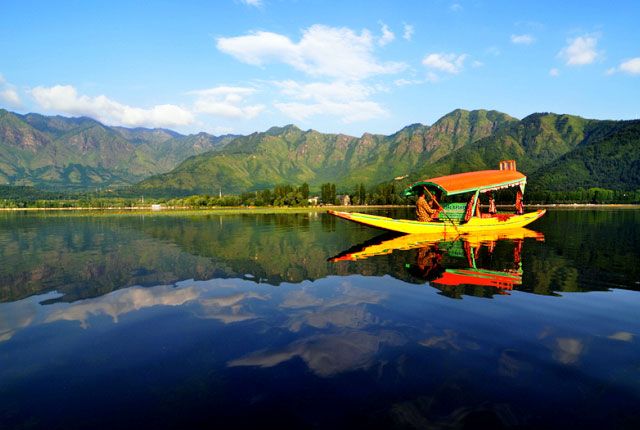
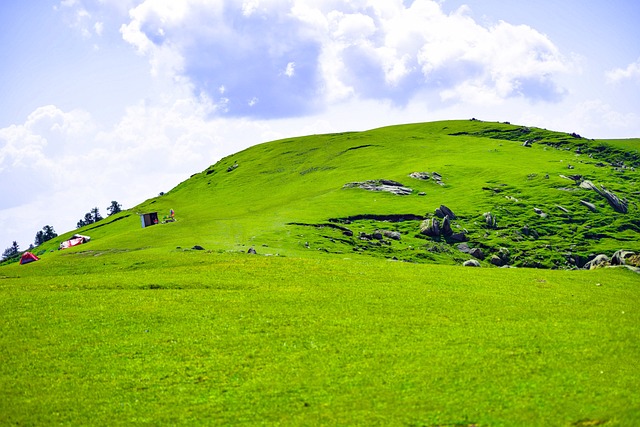
Golden Wheels knows how to make a trip memorable. From a pony ride through the valleys of Sonmarg to exploring hidden gems like Aharbal Waterfall, they crafted the perfect experience. We even got to taste authentic Kashmiri Kahwa after a long day of exploring!
We booked Golden Wheels for a corporate group trip, and they delivered beyond expectations! Well-planned itinerary, great accommodations, and a comfortable ride. Perfect for large groups!
Golden Wheels planned our honeymoon so beautifully! The houseboat stay was romantic, and the private car service made everything comfortable. Thank you, Mr. Ali, for this unforgettable experience
Our Kashmir trip was filled with breathtaking activities . a Shikara ride at sunrise, a heritage walk through old Srinagar, and a visit to a saffron farm. Golden Wheels took care of every little detail, making our journey smooth and memorable!
We got the full Kashmiri experience, thanks to Golden Wheels! We visited a floating market on Dal Lake, trekked to Baisaran (Mini Switzerland), and even enjoyed a picnic by a crystal-clear stream. Highly recommended for nature lovers
Adventure, culture, and relaxation – our trip had it all! We did camping under the stars in Yusmarg, explored ancient shrines in Srinagar, and went on a scenic road trip to Lolab Valley. Golden Wheels made every moment count